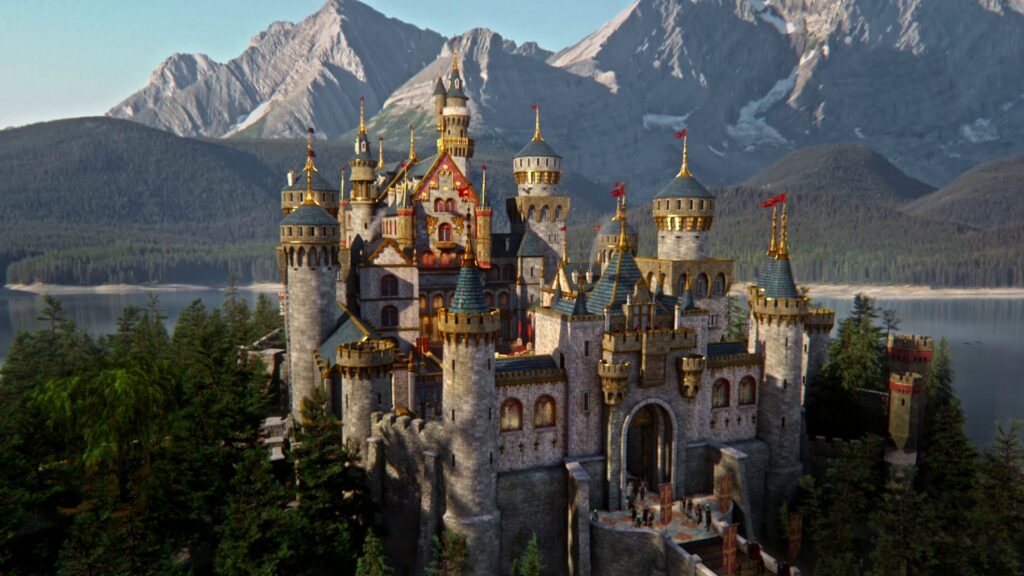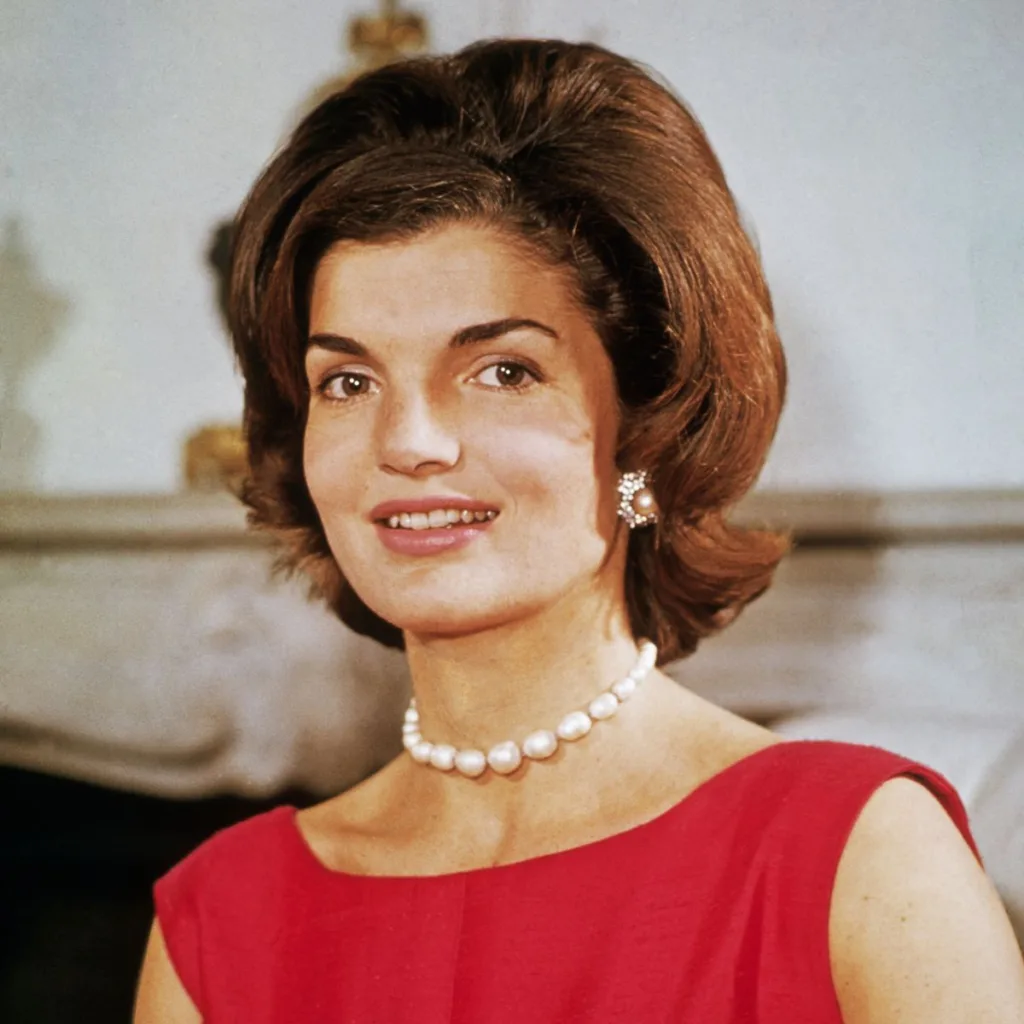Camelot, a legendary city, holds a significant place in the tales of King Arthur and his Knights of the Round Table. According to Arthurian legend, Camelot was the majestic palace and court where King Arthur ruled over his kingdom of Logres. This mythical city has captured the imagination of people throughout history, symbolizing an idyllic and utopian place.
The origins of Camelot can be traced back to various texts and medieval literature, with two primary sources often referred to – Geoffrey of Monmouth’s “Historia Regum Britanniae” and Chrétien de Troyes’ “Lancelot, the Knight of the Cart.” Both authors place Camelot in Caerleon, a Roman fort in South Wales.
Caerleon, which means “fortress of the legion” in Latin, was one of three Roman legionary forts in Britain and became the inspiration for Camelot’s location. The name Caerleon itself is a linguistic corruption derived from the Latin words castrum (meaning fortress) and legio (meaning legion).
In Arthurian legend, Camelot is depicted as a magnificent city, serving as the center of King Arthur’s court and the heart of his kingdom. It was here that Arthur and his knights convened at the famous Round Table, which could accommodate 150 knights. This table represented equality and chivalry, as all the knights sat together without a designated head or foot.
Camelot became synonymous with the ideals of Arthurian legend – bravery, honor, and justice. The city represented a golden age, a time of prosperity and unity under the wise and just rule of King Arthur. The knights of Camelot, including Lancelot, Galahad, and Gawain, were renowned for their virtues and their commitment to protecting the weak and upholding the code of chivalry.
The notion of Camelot as an idealistic and utopian society was further popularized by the Kennedy administration in the 1960s. First Lady Jacqueline Kennedy famously compared her husband’s presidency to the era of Camelot, invoking the imagery of King Arthur’s court to portray President Kennedy as a heroic and visionary leader. This comparison created a sense of hope and promise, emphasizing the notion that the Kennedy presidency was a time of great potential and possibility.
Camelot is a mythical city associated with the legendary King Arthur and his Knights of the Round Table. It represents a time and place of idyllic happiness, where honor, bravery, and justice prevailed. Whether rooted in medieval literature or evoked in modern political discourse, Camelot continues to captivate imaginations as a symbol of an idealized society and a hero’s quest for greatness.
What Camelot Means?
Camelot refers to the legendary site of King Arthur’s palace and court. It is often depicted as a place of grandeur and chivalry, representing a utopian society. In literature and mythology, Camelot symbolizes an idyllic and idealized time and place.
Some key points about Camelot:
1. King Arthur’s Court: Camelot was the seat of King Arthur’s power and authority. It served as the central hub for his knights, advisors, and subjects.
2. Symbol of Arthurian Legend: Camelot is a significant element in the Arthurian legend, highlighting the virtues of honor, loyalty, and heroism.
3. Location and Historical Context: The exact location of Camelot remains a subject of debate and speculation. Various theories suggest it could be in England, Wales, or even France. However, there is no concrete archaeological evidence to support any specific location.
4. Utopian Society: Camelot is often portrayed as a utopia, a perfect and harmonious society. It embodies the ideals of justice, fairness, and equality.
5. Arthurian Romance: The concept of Camelot gained popularity through medieval romances, particularly those written by Chrétien de Troyes and Thomas Malory. These stories romanticize the Arthurian legend and have contributed to the enduring fascination with Camelot.
6. Associated Characters: Camelot is closely associated with legendary figures such as King Arthur, Queen Guinevere, Sir Lancelot, and the Knights of the Round Table. These characters and their tales of love, honor, and adventure are intertwined with the Camelot narrative.
7. End of Camelot: The downfall of Camelot is often attributed to the betrayal and affair between Queen Guinevere and Sir Lancelot, leading to a series of conflicts and the ultimate demise of King Arthur’s kingdom.
Camelot represents the mythical palace and court of King Arthur, symbolizing an idealized and idyllic society. It has captivated the imagination of people for centuries, serving as a reminder of the virtues and values associated with Arthurian legend.

What Was The Real Camelot?
Camelot, the legendary court and fortress associated with King Arthur, has been a subject of much speculation and debate. While the concept of Camelot is rooted in Arthurian legends, the actual location of this mythical place remains uncertain.
According to two influential medieval writers, Geoffrey of Monmouth and Chrétien de Troyes, Camelot was situated in Caerleon, South Wales. Caerleon was one of three Roman legionary forts in Britain and was known for its strategic importance. Interestingly, the name “Caerleon” may sound Celtic, but it is actually a corruption of the Latin words “castrum” (fortress) and “legio” (legion), indicating its Roman origins.
To delve deeper into the topic, here are some key points:
1. Camelot’s association with Caerleon: Geoffrey of Monmouth, a twelfth-century Welsh cleric and historian, first mentioned Camelot in his work “Historia Regum Britanniae” (History of the Kings of Britain). He located Camelot at Caerleon and described it as Arthur’s primary court. Chrétien de Troyes, a French poet of the same era, also placed Camelot in Caerleon in his Arthurian romances.
2. Roman connection: Caerleon was a significant Roman fortress known as Isca Augusta. It served as the base for the Second Augustan Legion and played a crucial role in Roman Britain. The presence of Roman ruins and artifacts in Caerleon further strengthens the connection between Camelot and this location.
3. Literary interpretations: While Geoffrey and Chrétien placed Camelot in Caerleon, other medieval writers had different interpretations. Some suggested locations include Winchester, Tintagel, Glastonbury, and even fictional or symbolic representations of a utopian court.
4. Mythical symbolism: The concept of Camelot is not just a physical place but also carries symbolic and mythical significance. It represents a utopian society, a place of chivalry, honor, and the pursuit of noble ideals. The idea of Camelot has captured the imagination of people throughout history and has become synonymous with Arthurian legends.
While the real Camelot remains elusive, the writings of Geoffrey of Monmouth and Chrétien de Troyes point to Caerleon in South Wales as its possible location. Caerleon’s Roman heritage, coupled with its strategic importance, aligns with the legendary status of Camelot. However, it is important to remember that Camelot is not solely a physical place but also embodies the ideals and values associated with King Arthur’s court.
What Is Special About Camelot?
Camelot holds a significant place in Arthurian legend as a mythical and legendary castled city. It is said to have been located in Great Britain and served as the central hub of the Kingdom of Logres, where King Arthur held his court.
One of the most notable aspects of Camelot is the presence of the renowned Round Table. This table, which is believed to have accommodated around 150 knights, became a symbol of equality and chivalry. The Round Table fostered a sense of unity and camaraderie among the knights, who were expected to uphold the ideals of honor, courage, and justice.
Camelot is often associated with a sense of grandeur and splendor. It represents a utopian vision of a prosperous and harmonious kingdom, where Arthur ruled with wisdom and fairness. The city is described as a place of beauty and magnificence, with impressive architecture and lavish surroundings.
Furthermore, Camelot is frequently depicted as a center of learning and culture. It was believed to house a vibrant community of scholars, poets, and artists. The city’s intellectual atmosphere contributed to the development of the Arthurian legends and the preservation of knowledge.
In addition to its cultural significance, Camelot is also known for its role in the Arthurian quest for the Holy Grail. It was from Camelot that the knights set out on their legendary quests, seeking the sacred relic that held great spiritual power.
What sets Camelot apart is its mythical status and the ideals it represents. It embodies the concept of a just and prosperous kingdom, where noble knights strive for honor and uphold the principles of chivalry. Its association with King Arthur and the Round Table has made Camelot a symbol of Arthurian legend and a place of fascination for readers and enthusiasts of medieval mythology.
Why Were Kennedy’s Called Camelot?
The Kennedy presidency was often referred to as Camelot due to the efforts of two influential women: Jacqueline Kennedy, the First Lady, and Theodore White, a journalist. They played a crucial role in shaping the public’s perception of President Kennedy, comparing him to the legendary King Arthur and his era to the mythical time of Camelot.
1. Jacqueline Kennedy: As the First Lady, Jacqueline Kennedy was known for her impeccable style and grace. After President Kennedy’s assassination, she granted an interview to Theodore White for Life magazine, in which she made a connection between her husband’s presidency and the Arthurian legend. She mentioned that President Kennedy loved the musical Camelot, particularly the line, “Don’t let it be forgot, that once there was a spot, for one brief shining moment that was known as Camelot.” By associating her husband’s presidency with Camelot, she created a narrative of a magical, idealistic time that was cut short.
2. Theodore White: A renowned journalist, Theodore White wrote a book titled “The Making of the President 1960,” which chronicled Kennedy’s successful campaign. In this book, White portrayed the Kennedy administration as a new era of hope, idealism, and promise. He drew parallels between Kennedy and King Arthur, emphasizing their shared traits of bravery, diplomacy, and self-sacrifice. White’s book became immensely popular, solidifying the image of Kennedy as a heroic figure leading a noble and visionary era.
The combination of Jacqueline Kennedy’s interview and Theodore White’s book contributed to the public’s perception of the Kennedy presidency as a time of great potential and promise, similar to the mythical realm of Camelot. This perception was further heightened by Kennedy’s tragic assassination, which added a sense of unfulfilled potential and fleeting greatness to his presidency.
Jacqueline Kennedy’s association of her husband’s presidency with the musical Camelot and Theodore White’s portrayal of Kennedy as a modern-day King Arthur created the enduring myth of the Kennedy presidency as a brief, shining moment of hope and promise that was cut short, just like the legendary realm of Camelot.

Conclusion
Camelot is a legendary city that is deeply intertwined with the Arthurian legend. It is often portrayed as the site of King Arthur’s palace and court, where he ruled over the Kingdom of Logres. While the exact location of Camelot remains a subject of debate, it is commonly believed to be in Caerleon, South Wales.
Camelot holds a significant place in literature and folklore, symbolizing an idyllic and utopian society. It is renowned for being the home of the round table, where 150 knights gathered to uphold the ideals of chivalry, honor, and justice. The concept of Camelot has become synonymous with a time and place of idealistic happiness and unfulfilled promise.
The image of Camelot has been further immortalized in popular culture, particularly through the association with President John F. Kennedy and his administration. First introduced by his wife, Jacqueline Kennedy, the notion of the Kennedy presidency as a modern-day Camelot portrayed Kennedy as a heroic figure embodying courage, diplomacy, and self-sacrifice.
The legend of Camelot continues to captivate our imaginations, symbolizing a mythical realm of noble ideals and unattainable perfection. It serves as a reminder of the power of storytelling and the enduring appeal of legendary tales that shape our collective memory.
